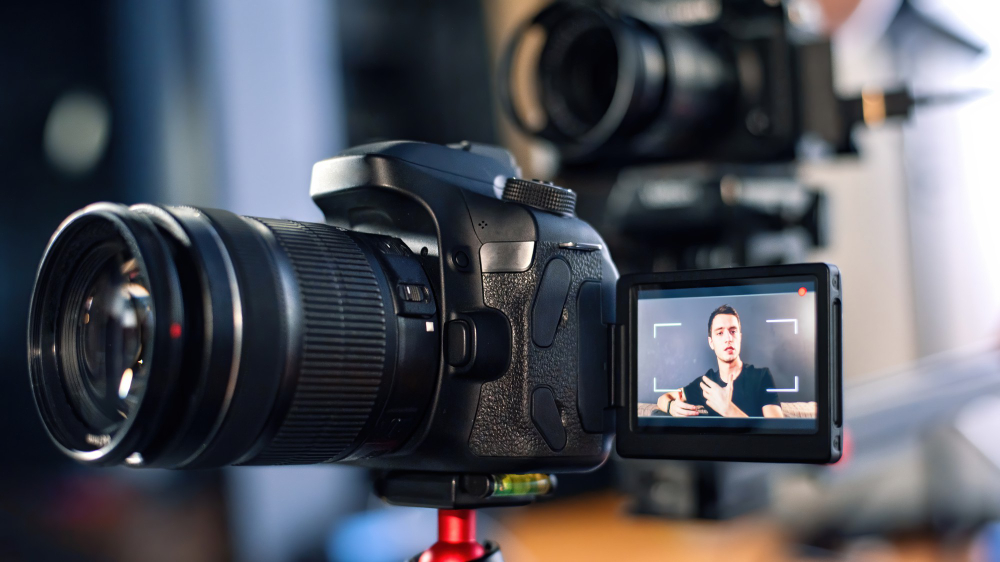Videography is a powerful medium that brings stories to life through visual and auditory elements. The art of visual storytelling goes beyond simply recording events; it involves creative techniques that captivate audiences and convey deeper meanings.
In this blog, we will explore essential aspects of videography, from mastering composition to the evolution of video technology, and how these elements work together to create compelling narratives.
Mastering the Frame: Composition and Perspective
The foundation of great videography lies in composition. Framing your shots correctly ensures that each element within the frame contributes to the story you are telling. Consider the rule of thirds, leading lines, and symmetry to guide viewers’ attention. Experimenting with different perspectives, such as high-angle or low-angle shots, can also add depth and interest to your visual story.
Lighting: The Play of Shadows and Light
Lighting is crucial in setting the mood and atmosphere of your video. The interplay between shadows and light can evoke emotions and highlight important aspects of your scene. Natural light can be harnessed for a soft, organic feel, while artificial lighting can be manipulated to create dramatic effects. Understanding how to control and use light will enhance the overall impact of your videography.
The Magic of Motion: Camera Movements and Angles
Camera movements and angles bring dynamism to your footage. Techniques such as panning, tilting, and tracking can make your scenes more engaging. Each movement and angle should serve a purpose, whether it’s to follow a character, reveal information, or create suspense. Mastering these techniques allows you to guide the viewer’s eye and maintain their interest throughout the video.
Sound Design: The Unseen Character
Sound design plays a pivotal role in videography, often acting as an unseen character that enhances the narrative. Ambient sounds, music, and dialogue must be carefully mixed to support the visual elements. Good sound design can build tension, convey emotions, and immerse the audience in the story. Investing time in capturing high-quality audio and creatively using sound effects will significantly elevate your videos.
Evolution of Video Technology: From Analog to Digital
The journey from analog to digital video technology has transformed the way we create and consume media. In the early days, Comparing VHS to Betamax highlights the competition between analog video formats, each with its own strengths and weaknesses. However, the shift to digital brought about greater convenience and quality, revolutionizing the industry.
One significant aspect of this evolution is the practice of converting old VHS tapes to DVDs or digital files. This transition not only preserves cherished memories but also simplifies storage and sharing. As a result, guides on converting VHS tapes to DVDs have become increasingly popular, helping individuals safeguard their nostalgic videos for future generations.
Overall, the move from analog to digital has opened up new creative possibilities for videographers. Enhanced video quality, easier editing processes, and the ability to distribute content widely have all contributed to the dynamic and accessible world of videography we enjoy today.
Editing Techniques: Crafting the Story in Post-Production
Editing is where the magic of videography truly comes together. Post-production allows you to refine your footage, add effects, and craft a cohesive narrative. Techniques such as cutting, transitioning, and color grading can dramatically change the look and feel of your video. Understanding the principles of editing and having a clear vision of your story will help you create a polished and professional final product.
Innovative Trends in Videography
Videography is constantly evolving, with new trends and technologies emerging regularly. From drone videography offering stunning aerial perspectives to 360-degree videos providing immersive experiences, staying updated with the latest innovations can inspire fresh ideas. Additionally, the rise of social media platforms has shifted the focus towards short-form content, challenging videographers to tell compelling stories in just a few seconds.
To Wrap Up
The art of visual storytelling in videography combines technical skills with creative vision. By mastering composition, lighting, camera movements, sound design, and editing, you can create videos that captivate and inspire. Embracing the evolution of video technology and exploring innovative trends will keep your work relevant and exciting. Whether you’re preserving memories or telling a fictional tale, the techniques discussed in this blog will help you elevate your videography to new heights.





